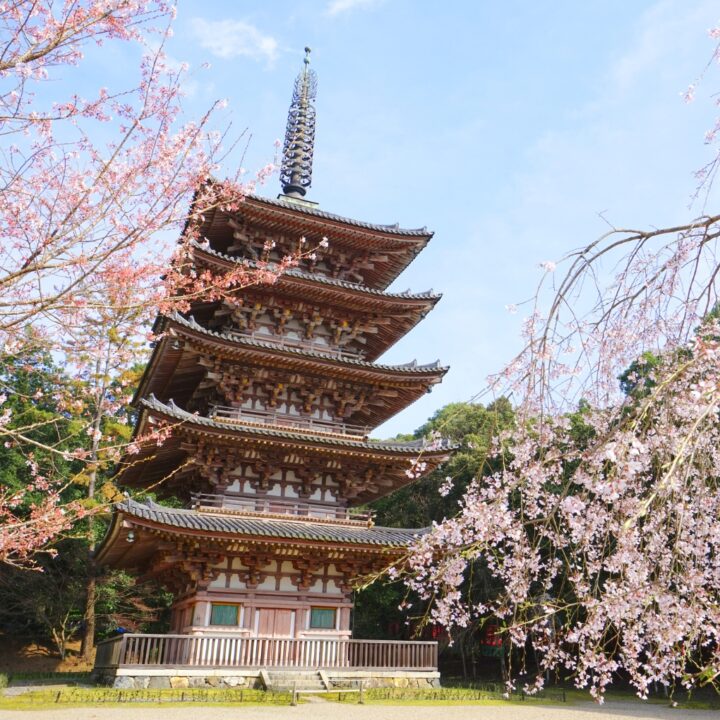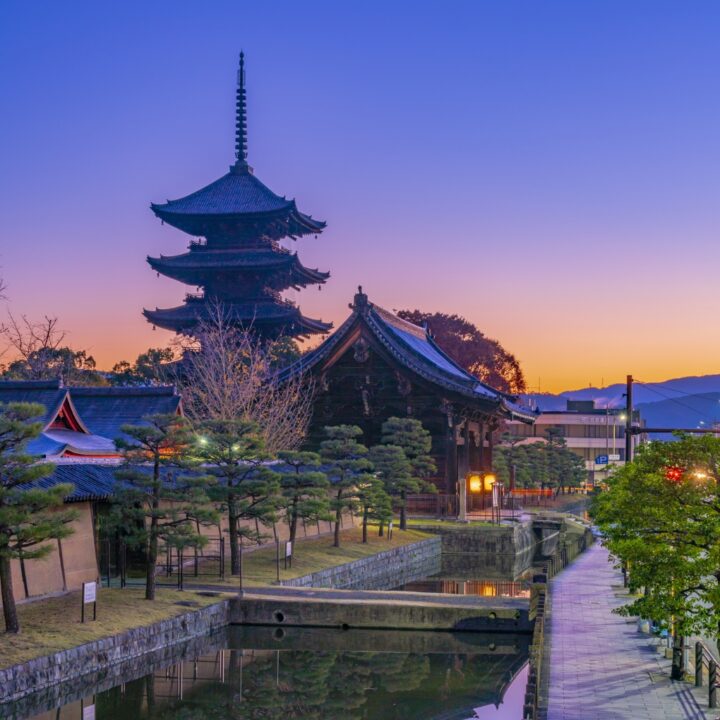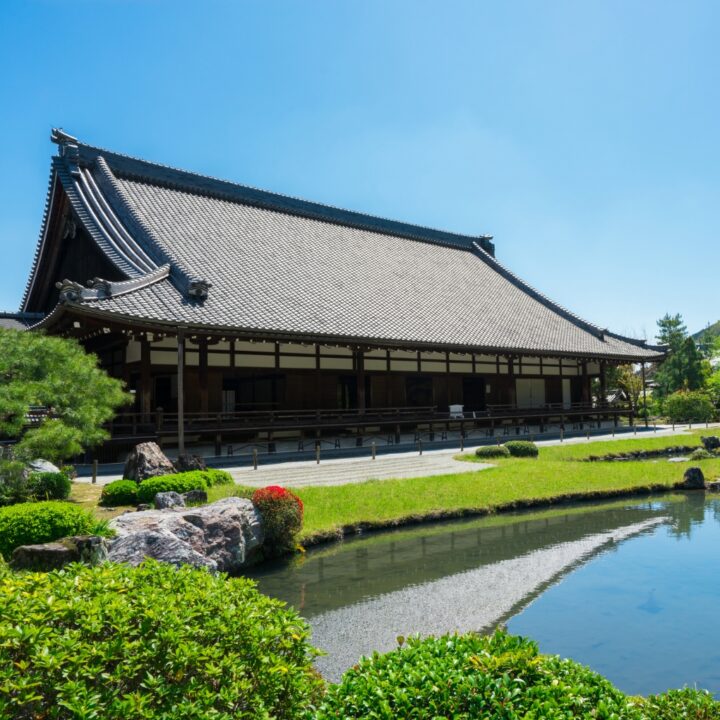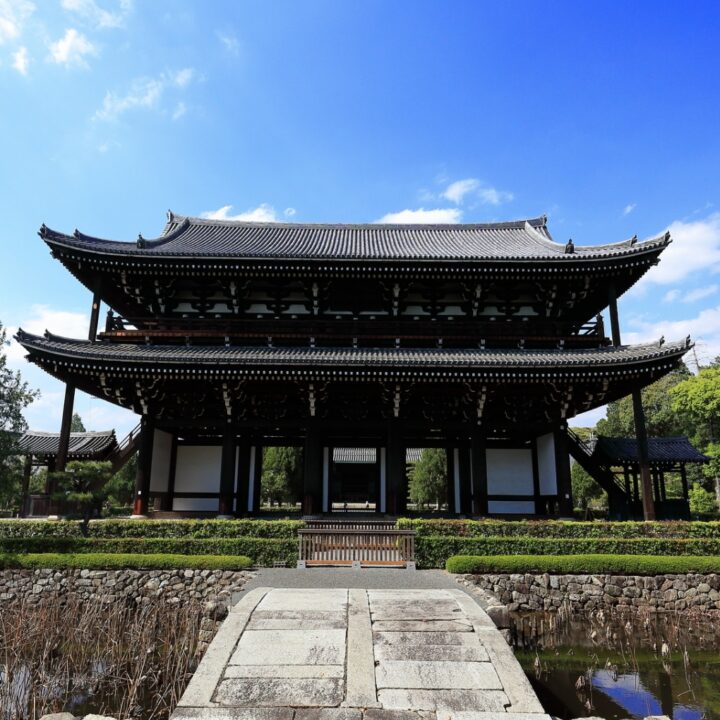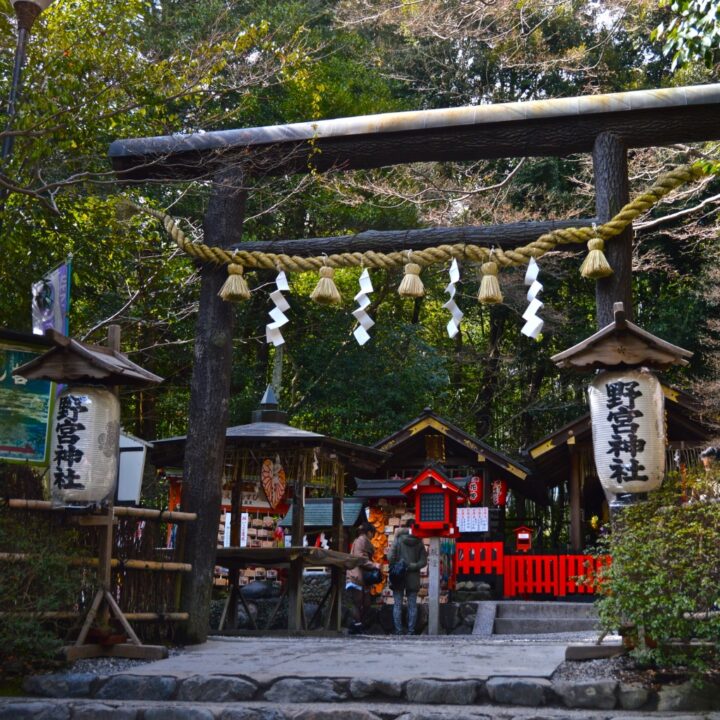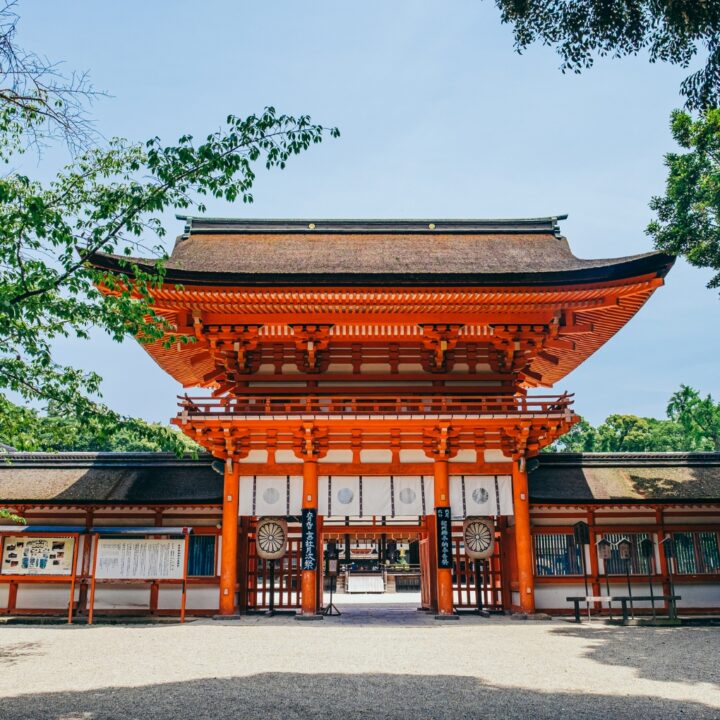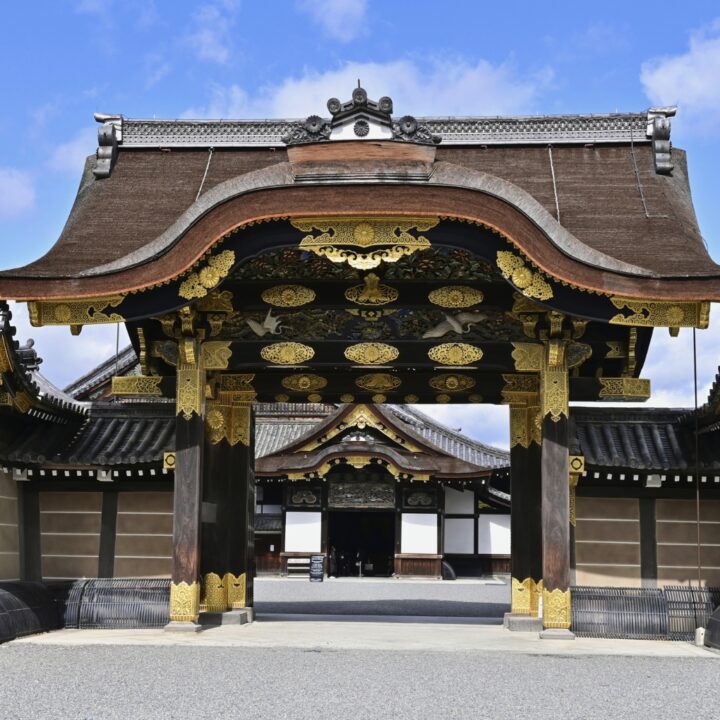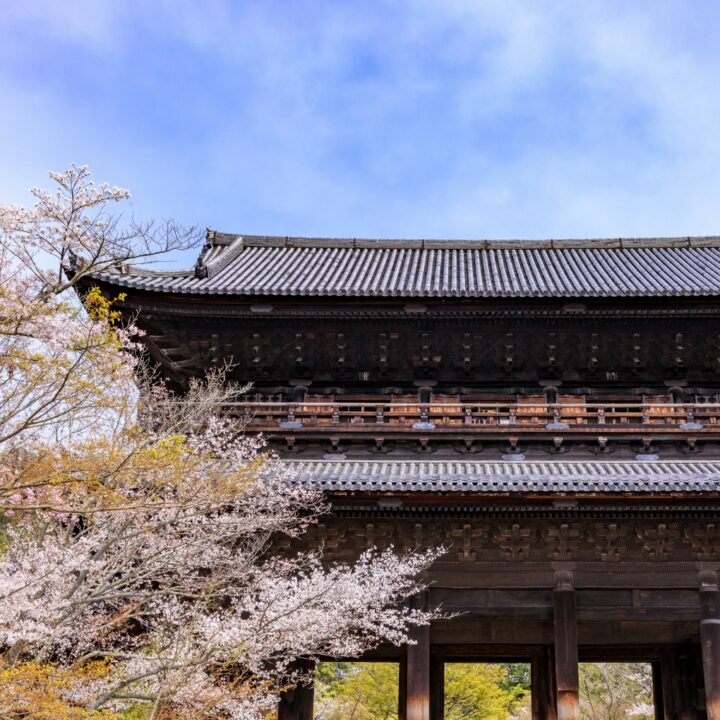Ninnaji Temple, located in Ukyo Ward, Kyoto, is the head temple of the Omuro School of the Shingon sect. It was founded by Emperor Uda during the Heian period and is registered as a UNESCO World Cultural Heritage site. The expansive grounds are home to numerous attractions, including the National Treasure Kondo and the Important Cultural Property Five-Storied Pagoda. The temple is particularly renowned for its late-blooming Omuro cherry blossoms, which create a stunning display in spring. As a temple historically overseen by members of the imperial family, Ninnaji Temple offers a deep insight into Japan’s history and culture. Be sure to visit when touring Kyoto.
Ninnaji Temple
Omuro Cherry Blossoms and Historical Structures Tied to the Imperial Family
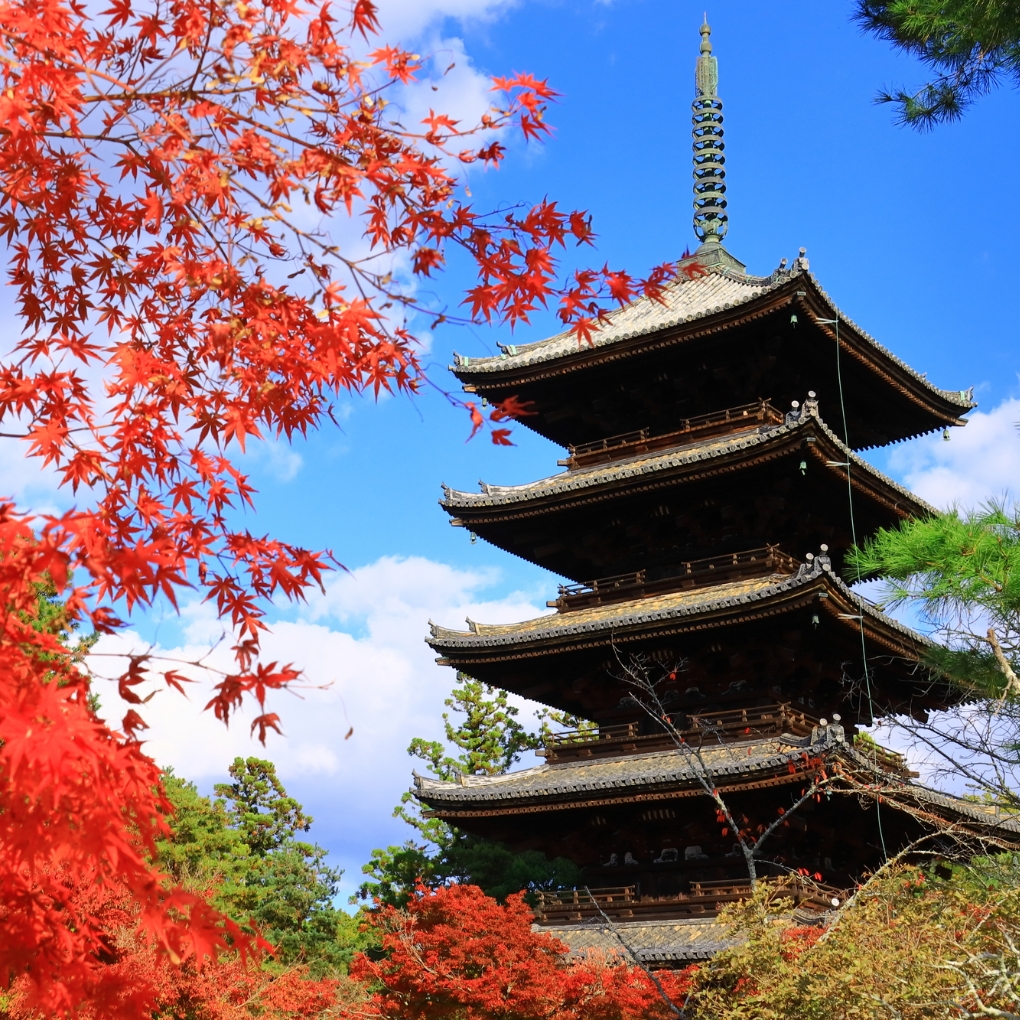
Highlights
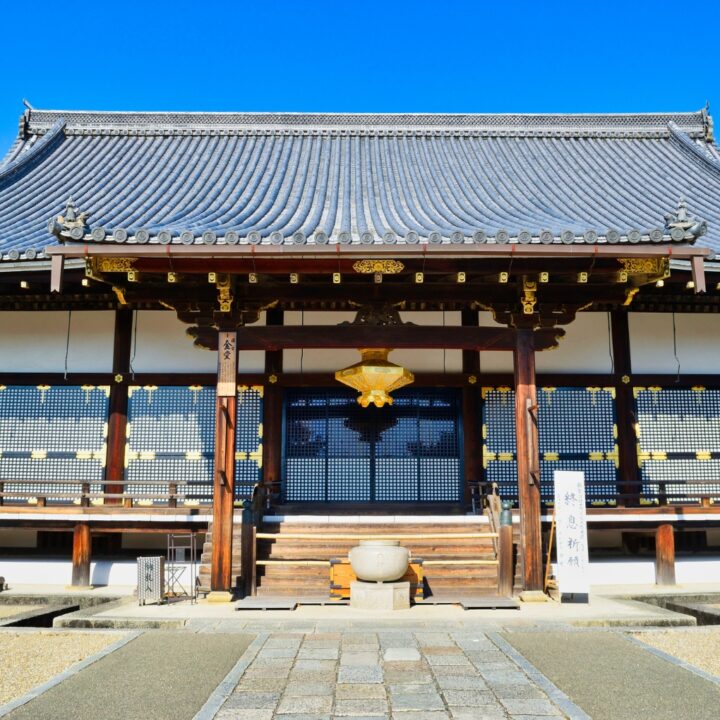
Kondo (National Treasure) - A Precious Structure Reflecting Heian Palace Architecture
The Kondo of Ninnaji Temple is a relocated section of the Shishinden Hall from the Kyoto Imperial Palace. This building retains the architectural features of Heian-period palaces and is designated as a National Treasure. Inside, beautiful statues of Amida Nyorai (Amitabha Buddha) and Bodhisattvas are enshrined. The majestic atmosphere of the Kondo allows visitors to feel the deep history of the ancient capital. Its elegant appearance continues to captivate all who visit.
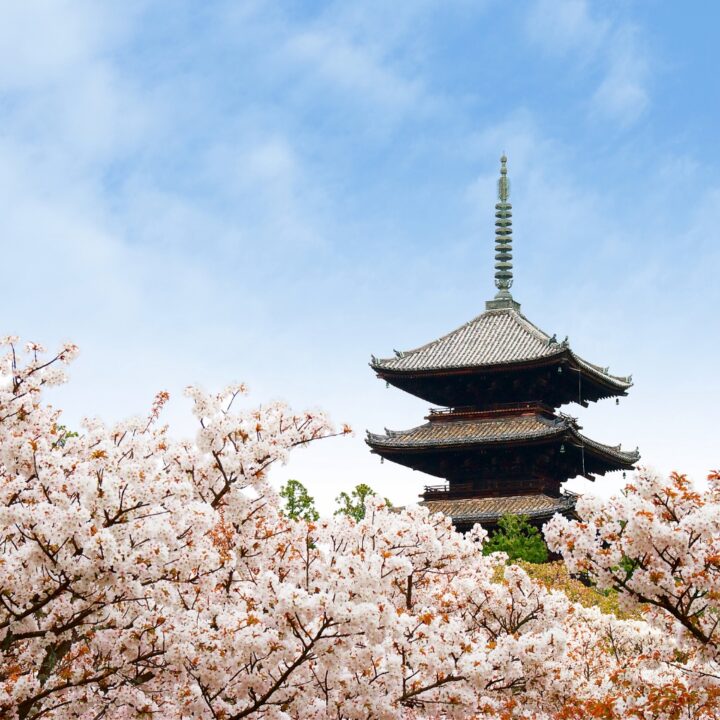
Omuro Cherry Blossoms - Kyoto's Latest Blooming Cherry Trees
Ninnaji Temple is famous for its Omuro cherry blossoms. Around 200 cherry trees are planted within the temple grounds, reaching full bloom from mid to late April, making them Kyoto’s latest blooming cherry trees. As other cherry blossoms begin to fall, the Omuro cherry blossoms burst into full bloom, creating a breathtaking scene with their pink petals swirling in the wind like a cherry blossom storm. A leisurely stroll under these blossoms is highly recommended.
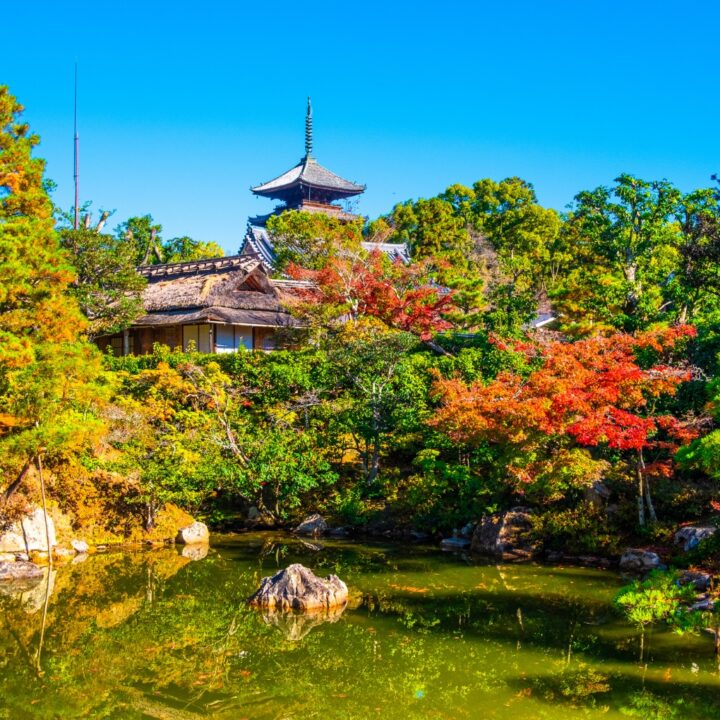
Structures Associated with Emperor Uda
The Goten (Imperial Residence) at Ninnaji Temple, which includes the Shinden, Byakusho-in, and Reimeiden, was once the residence of Emperor Uda. Surrounded by a beautiful Chisen stroll garden, the Goten's interior is not open to the public, but the gardens are accessible year-round, offering stunning seasonal views, especially during the autumn foliage. Walking around the Goten area, one can reflect on the imperial history connected to this sacred site.
Information
| Name in Japanese | 仁和寺 |
| Postal Code | 616-8092 |
| Address | 33 Omuro Ouchi, Ukyo-ku, Kyoto, Kyoto Prefecture |
| Telephone | 075-461-1155 |
| Holiday | Open every day |
| Business Hours |
|
| Admission | Free admission to the precincts, 800 yen for the Imperial Palace Garden, 500 yen for the Reihokan (limited period only), 1,000 yen for the Ryokaku-tei and Hito-tei teahouses (separate admission fee to the Goten is required; reservations are required at least 7 days in advance for groups of 5 or more), 500 yen for special admission to the Omuro Sakura Flower Festival. |
| Directions |
|
| Credit cards | Not accepted |
| Official Website | Official Website |
FAQ
Can I participate in the morning service?
Guests staying at the Omuro Kaikan can participate.
Can I practice sutra copying (shakyo)?
Yes, a “Shakyo Dojo” is held at Manreido Hall from 1:00 PM to 2:00 PM on the 25th of every month, open to the public.
Can I view the cherry blossoms at night?
There are no evening viewing hours.

